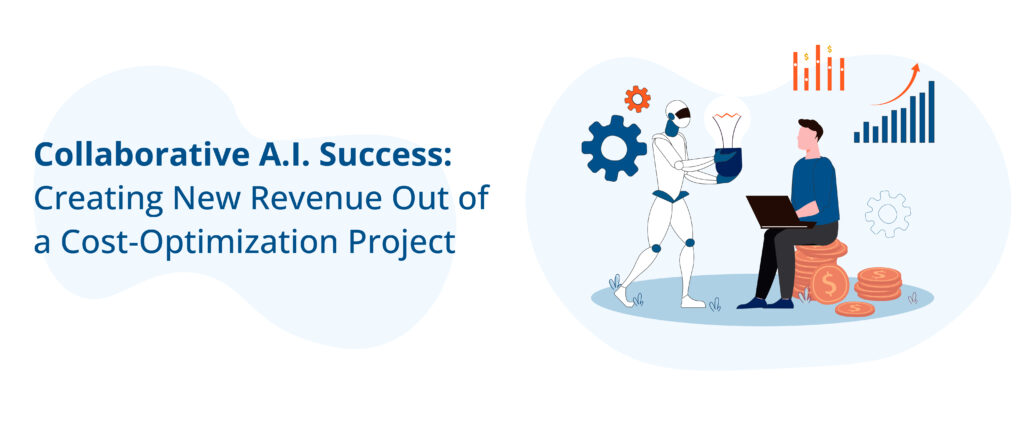
When humans and A.I. machines work together, business-changing outcomes are more common. We’ve known this since at least 2018, when Harvard Business Review published a study of 1,500 companies that found human analysts working with A.I. machines produce the most profound performance improvements.
At the time, HBR called the trend “collaborative intelligence.” Five years of improvements in A.I. technology – from advanced analytics with machine learning to natural language processing and much more – suggest a better term is needed. We believe collaborative A.I. better describes where we’re headed and what we’re seeing.
Why? We aren’t talking about a cooperation of equals where A.I.s and human analysts combine skills. Instead, we’re talking about A.I.s and humans slotting into fundamentally different but mutually supporting roles. Ultimately, we believe the best results derive from A.I. systems automating complex and tedious workflows that humans handle inefficiently.
The resulting operational gains provide analysts and business leaders with the time and freedom to perform creative work that unlocks new value, as in the case of a consulting firm that automated much of its data processing work and unleashed new growth. Read on for the details and then keep coming back for more.
This is the first of a short article series in which we profile the collaborative A.I. successes we’ve seen so far as well as others in development that offer equally rich promise.
When humans do work fit for a machine

Hours are the currency of multinational consulting firms. How those hours get used matters, and misuse can be costly. In this particular case, a firm whose clients include businesses employing thousands of people in hundreds of thousands of different roles worldwide was misallocating time to low-level work and missing its billing targets as a result.
Matching top-billing consultants to the right work had become a priority. Fixing the problem would require inserting A.I. into the onboarding process. The need was acute: consultants were hand-entering descriptive data about the workforces the firm was being paid to analyze at a strategic level. Weeks passed as diligent analysts spent their days adding many thousands of rows of information into spreadsheets – just to begin the analysis work that was to come. Clients rightly expected better, and got it.
Using GraphGrid to create knowledge graphs and train an A.I. about the various roles and definitions in those spreadsheets, the firm relieved its eye-weary consultants and shifted to a more automated approach that’s 93% accurate as of this writing and still improving. Analysts oversee the process to ensure errors aren’t introduced into the dataset.
High-value analysts given the chance to do high-value work
At its best, the human + A.I. partnership provides extraordinary benefits. We ask neither A.I.s to do more than they are built to do, nor do we ask human analysts to do work that’s tedious or low-value. Here, the partnership created freedom for consultants to pursue the sorts of strategic work that leads to client success and repeat business.
It also changed the dynamics of the underlying operation. Consulting is deep work that commands high fees. Abstracting and automating preparatory work that allows deep work to occur is, of course, hugely beneficial to the analysts who prefer to spend their time solving big problems. It also creates time to solve more of those problems, unleashing growth that simply wouldn’t be achievable if consultants weren’t pairing with A.I.s. The firm is reaping the benefits of this truism today.
Naturally, there’s more to be learned as the firm puts A.I. to use alongside top consultants in fresh engagements. But the fruit of these early efforts taste sweet and reflect a key learning HBR identified in describing “collaborative intelligence” back then. “Organizations that use machines merely to displace workers through automation will miss the full potential of A.I.,” author H. James Wilson wrote at the time, presciently.
Five years later, it’s the humans and machines working in partnership that are yielding the biggest benefits to organizations willing to embrace this new paradigm.
Get started now for free
Schedule a free solutioning session with a Graph and AI professional. Tell us about your highest impact data-intensive challenge or opportunity so we can help you determine your best path to achieving real world value.
In the meantime, feel free to download GraphGrid at our Freemium license level and check out our step-by-step tutorials, video tutorials, or read more about GraphGrid in our use cases, blogs, and documentation.
